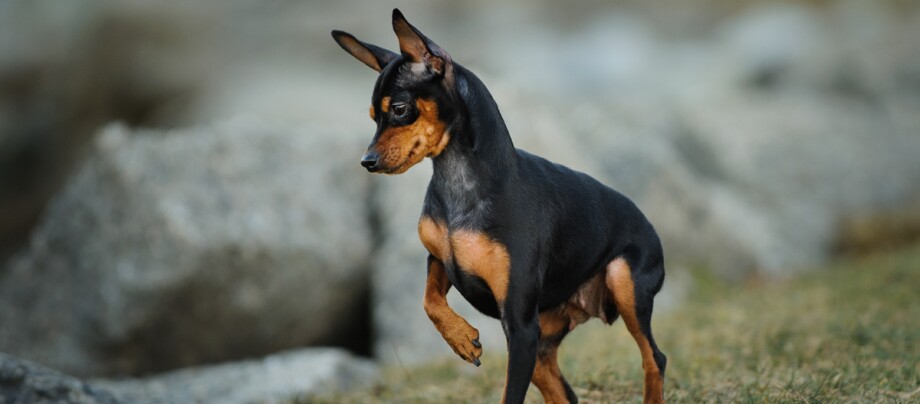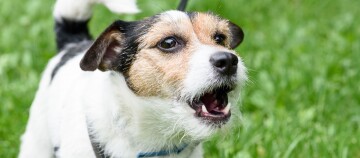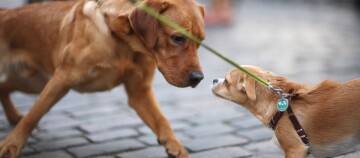Miniature Pinscher - Intelligent Miniature and Master of Tricks
20.03.2025 - Reading time: 3 minutes

The Miniature Pinscher, or "Min Pin", is really small, but by no means is it an undemanding companion. Instead of a city apartment and a handbag, this tiny dog prefers a large garden, extensive walks and work for his head and nose. If you meet the challenges of maintenance and training, you will be rewarded with an alert, active and loyal four-legged friend, who will go with you through the thick and thin!
NewsletterMiniature Pinscher
Breed | Miniature Pinscher |
Origin | Germany |
Classification | Schnauzer & Pinscher
|
Size | 25 to 30 centimetres shoulder height
|
Weight | 3.5 to 4.5 kilograms
|
Physique | small, compact, tough and well-trained
|
Eyes | tall and dark
|
Ears | medium-sized and upright
|
Coat and colour | short, robust; colours: solid reddish brown to light brown as well as black with lighter markings |
Special features | also known as Rehpinscher, Min Pin or Zwergpinscher
|
Nature | very lively, intelligent, curious and self-confident
|
Care | Brush coat and check ears, eyes, teeth and claws
|
Health | Predisposition to some hereditary diseases such as eye problems
|
We have the best products for your miniature Pinscher!
Easily underestimated - clever miniature Pinschers
Weighing only 4 kilograms on average, the miniature Pinscher is one of Germany’s oldest hunting dog breeds. Its ancestors were used for hunting rats, since the 16th century and were considered fearless, lively guard and stable dogs. In recent decades, the “Min Pin” has become smaller and smaller and now belongs to the dwarf dog breeds. Its nature has remained quite unchanged.
Nature of the miniature Pinscher
The miniature Pinscher is a highly intelligent, confident little dog that is full of energy and loves to frolic around. It comes with a great deal of courage, self-confidence and alertness. The breed was long listed with the terriers because of their similar nature: miniature Pinschers are constantly under stress, get bored quickly and look for something to keep them occupied. Chewing furniture and shoes is as typical as is intensive digging in the garden. Many miniature Pinschers love to bark and use their voice to signal, when playing or as a protest against being left alone.
Despite their intelligence, some dogs of this breed take quite a long time to become house-trained. This may be due to their small bladder, but also their stubbornness and unwillingness to cooperate. You really have to earn the loyalty of a miniature Pinscher, but once earned, you can rely on a very close bond.
Training and maintenance of the miniature Pinscher
Miniature Pinschers are always on the move. No noise passes them by unheard and unannounced. This breed is therefore not very suitable for keeping in a small city apartment with many neighbours. They are better off in a home with a garden in a quiet area. Make the fence really “small-dog proof”, otherwise the clever miniature Pinscher will use every gap to escape.
Great caution is necessary when meeting other dogs. The cheeky dwarf is so self-confident that it takes no account of its size, when coming into contact with other dogs. Whether play or stress – the risk of injury is very high!
The special nature and small size of the miniature Pinscher make its training all the more important. However, Min Pins have little will to please and are experts in “selective hearing”. Training is easiest when you take advantage of their intelligence: These dogs love to solve problems and earn praise. Seeking games, dog tricks and plenty of exercise are the recipe for a busy and calm miniature Pinscher.
Care of the miniature Pinscher
The short, robust coat of the Miniature Pinscher is very easy to care for. Occasional brushing and checking of ears, eyes, teeth and claws are sufficient.
Special features of the miniature Pinscher
Due to the small size, the risk of injury is higher than with other breeds. In the first year of life, your miniature Pinscher should not climb stairs, jump off the couch or play with larger dogs.
The most common diseases are patellar luxation (the patella pops out), eye problems and metabolic diseases. Therefore, when buying a puppy, look for a responsible breeder. The German Kennel Club can provide you with the relevant address lists.
With appropriate care, diet and exercise, miniature Pinschers can live up to 15 years.




